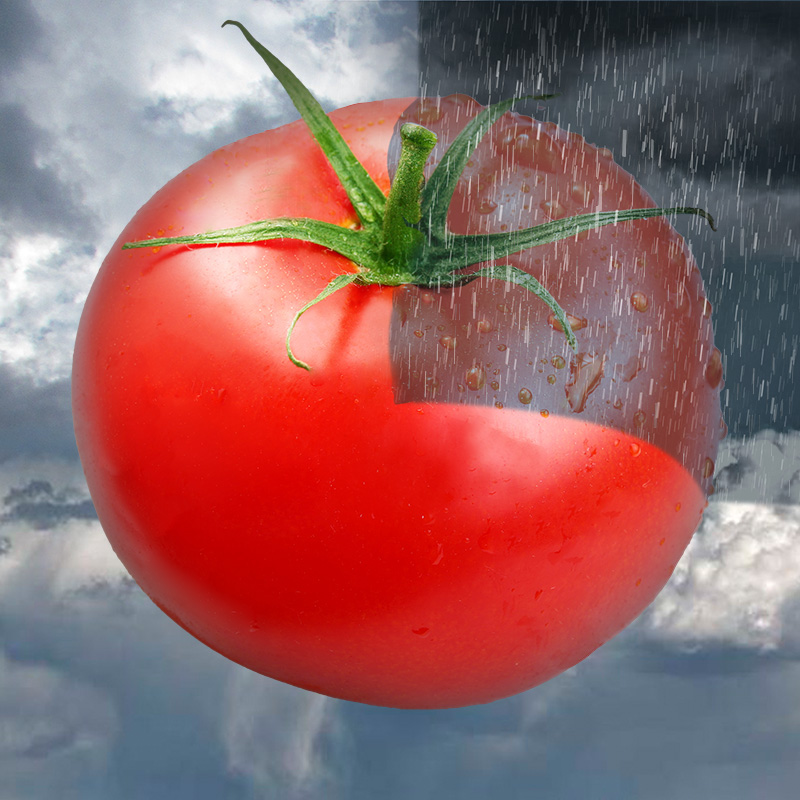Every once in a while, it occurs to me that something about the world that I usually take for granted doesn’t have an immediately obvious explanation. For example, I remember asking my fourth-grade science teacher, “When you get an extension cord and plug multiple appliances into the same electric outlet, why do they all get the full amount of electricity?” Or, much more recently, asking my friend Kate, “Why is it harder to walk uphill?” (Not surprisingly, we were walking uphill at the time.)
The latest thing that I realized that I don’t understand is what a weather forecast means when it quantifies a chance of rain. When I looked this question up online, what I found was a formula for “PoP,” or “probability of precipitation” — but I couldn’t find an explanation of what the results of that formula actually mean.
To get at what bothers me, let’s start with an example having nothing to do with weather or probability: the numbers on the movie-rating site Rotten Tomatoes. It’s not unusual for a movie’s Tomatometer score — its level of approval as expressed in critics’ reviews — to go down as more critics weigh in with their opinions. For instance, the Tomatometer rating for “Wonder Woman 1984” reportedly dropped from 88% to 63% within a few weeks, and the rating for “Joker” dropped from 86% to 69% over a period of months.
I think we can all agree that if a Tomatometer score goes from 80-something to 60-something, that dip doesn’t reflect a change in the quality of the movie — after all, every frame of the movie is the same as it always was. It’s just that as more ratings come in, Rotten Tomatoes has a more comprehensive data set from which to calculate the level of approval. It’s reasonable to expect that the longer one waits after a movie comes out, the more accurately a Tomatometer score will reflect the critical consensus. That’s fine, because Rotten Tomatoes doesn’t claim to know what the ultimate level of approval will be; it just offers a snapshot of what that level currently is.
Where things get more complicated is when probability enters the picture. Probability confuses me, because incredibly unlikely events happen all the time. Supposedly, the chance of any particular person being born is about 1 in 400 trillion. However, if you were to ask me what the chance was of me being born, I would have to say it was 100%, because here I am! “Unlikely” is meaningless when applied to the past, because any past event has achieved the ultimate in likelihood — it actually happened. When we talk about the probability of past events, we’re merely talking about our inability to understand the universe in sufficient detail to predict that the event would happen.
One would think that probability makes more sense when we’re talking about the future. But when the weather forecast says that there’s a 30% chance of rain tomorrow, that’s technically a false statement. Rain is a binary proposition — either it’s going to rain tomorrow, or it isn’t. The chance of rain is either 0% or 100%, but we won’t know which one it is until tomorrow.
As the National Weather Service continually revises the chance of rain for an area, the actual chance of rain isn’t changing at all — the weather systems are playing out just as they would have. What’s changing is the recency of the data on which the forecast is based. Just as the Rotten Tomatoes score for a movie changes as more reviews come in, the weather forecast changes as further observations are made. The chance of rain may originally have been quoted as 30%, but when moisture-laden clouds are seen to be heading toward the area in question, the probability might be raised to 60%, and when the clouds turn heavy and dark, the prediction might become 90%. Eventually, actual drops of water start falling, and the chance of rain becomes 100% — at last, the correct number.
No matter what the chance of rain is originally said to be, further observations will always move the probability upward or downward until it reaches 100% or 0%. But the complex, interacting influences that produce weather still aren’t understood well enough for us to predict, with any accuracy, what those observations will be at any given moment. If that’s the case, what could that original forecast of 30% actually have meant?
So far as I can tell, to say that the chance of rain is 30% means that, at that moment in time, with our limited understanding of the functioning of weather systems, we had only a 30% chance of predicting correctly that it’s going to rain. The statement of probability turns out not to be a statement about rain at all, but a statement about the capabilities of our current science and technology.

Recent Comments